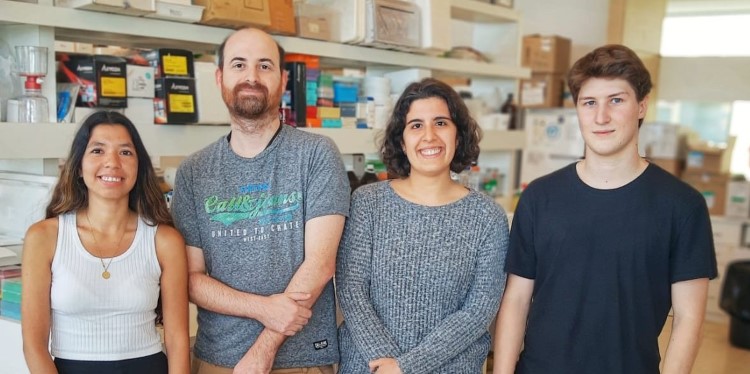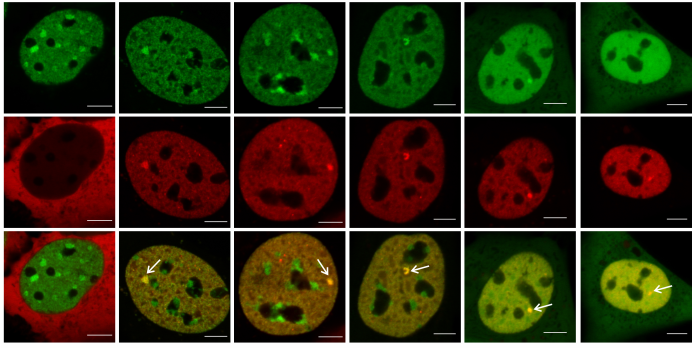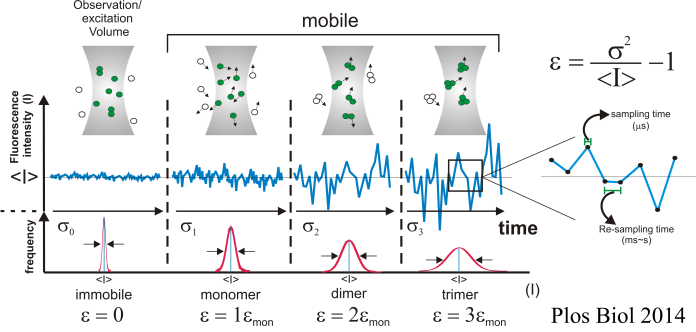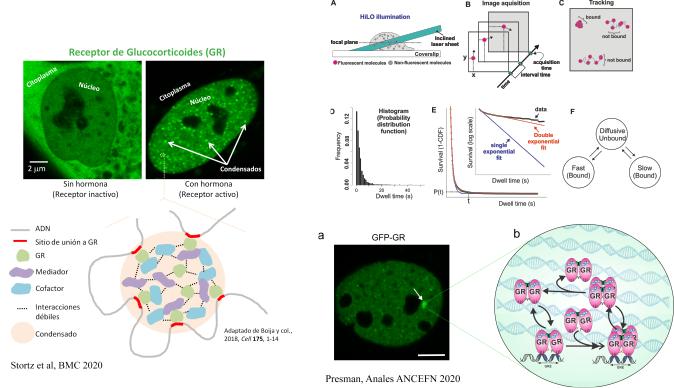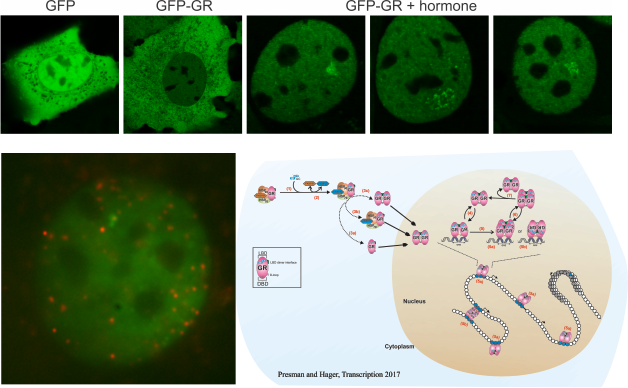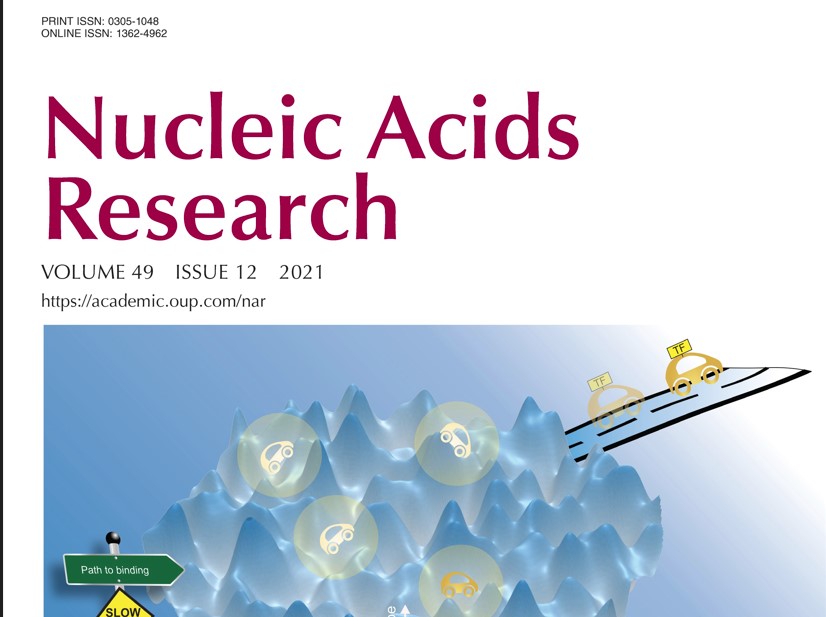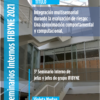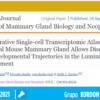
Transcription Factor Dynamics / Dinámica de factores de transcripción
Dr. Diego M. Presman
JEFE DE GRUPO / Principal investigator
Investigador Independiente CONICET.
Jefe de Trabajos Prácticos, Departamento de Fisiología, Biología Molecular y Celular, FCEN-UBA
presmandm@fbmc.fcen.uba.ar
Our laboratory aims to understand the molecular mechanisms by which transcription factors regulate gene expression. Using advanced fluorescence microscopy techniques and the glucocorticoid receptor as a model system, we found that DNA can induce a conformational change in transcription factors, altering their quaternary structure. We also study how the movement and localization of transcription factors within the cell nucleus affect their transcriptional activity
Nuestro laboratorio intenta comprender los mecanismos moleculares a través de los cuales los factores de transcripción regulan la expresión génica. Usando técnicas avanzadas de microscopía de fluorescencia y el receptor de glucocorticoides como modelo de estudio, encontramos que el ADN puede inducir un cambio conformacional en los factores de transcripción, alterando su estructura cuaternaria. También estudiamos cómo el movimiento y localización de los factores de transcripción dentro del núcleo celular afecta la actividad transcripcional de los mismos.
Research areas / Líneas de Investigación:
The glucocorticoid receptor (GR), a ligand-activated transcription factor, is one of the main molecular targets for drug development due to its potent anti-inflammatory and immunosuppressive effects. Unfortunately, although several diseases are treated using these drugs, none of them can be considered free of serious side effects. For this reason, over the past decades, great efforts have been made to identify dissociated ligands—that is, synthetic hormones that separate the desired (anti-inflammatory) effects from the adverse (metabolic) effects. The prevailing paradigm establishes a direct relationship between the oligomerization state of GR (whether it acts as a dimer or monomer) and its physiological activity (anti-inflammatory or metabolic effects). This dissociated model has guided the search for ‘safer’ ligands for the past 20 years, with little success. For some years now, we have been challenging this paradigm by suggesting that the dimer–monomer dichotomy does not exist in vivo, and that GR undergoes a dimer-to-tetramer transition, proposed as the receptor’s final active form. Our laboratory aims to elucidate the functional relationship between the quaternary structure of GR, its intranuclear dynamics, and its transcriptional activity.
El receptor de glucocorticoides (GR), un factor de transcripción activado por ligando, constituye uno de los principales blancos moleculares para el desarrollo de fármacos debido a su potente efecto antiinflamatorio e inmunosupresor. Desafortunadamente, si bien varias enfermedades son tratadas mediante el uso de estas drogas, ninguna de ellas puede considerarse libre de graves efectos secundarios. Es por ello que durante las últimas décadas se han realizado enormes esfuerzos por encontrar ligandos disociados, es decir, hormonas sintéticas que separen los efectos deseados (antiinflamatorios) de los efectos adversos (metabólicos). El paradigma vigente establece una relación directa entre el estado de oligomerización del GR (si actúa como dímero o como monómero) y su actividad fisiológica (efectos antiinflamatorios o metabólicos). Este modelo disociado ha dirigido la búsqueda de ligandos “más seguros” durante los últimos 20 años, sin mayores éxitos. Desde hace algunos años, hemos venido desafiando el modelo vigente al sugerir que la dicotomía dímeromonómero es inexistente in vivo, y que el GR sufre una transición dímero->tetrámero, propuesta como forma activa final del receptor. Nuestro laboratorio tiene como objetivo dilucidar la relación funcional entre la estructura cuaternaria del GR, su dinámica intranuclear, y su actividad transcripcional.
Papers destacados en esta línea de trabajo:
– The multimerization pathway of the glucocorticoid receptor. Andrea Alegre-Martí#, Alba Jiménez-Panizo#, Agustina L. Lafuente#, Thomas A. Johnson, Inés Montoya-Novoa, Montserrat Abella, Paloma Pérez, Juan Fernández-Recio, Diego M. Presman, Gordon L. Hager✉, Pablo Fuentes-Prior✉, and Eva Estébanez-Perpiñá✉. #co-first autos, ✉co-corresponding authors. Accesible en bioRxiv: https://doi.org/10.1101/2024.12.12.628195
– The mineralocorticoid receptor forms higher order oligomers upon DNA binding. Gregory Fettweis, Thomas A. Johnson, Brian Almeida-Prieto, Julián Weller-Pérez, Diego M. Presman, Gordon L. Hager✉, Diego Alvarez de la Rosa✉. Protein Sci. 2024 33(3):e4890. https://doi.org/10.1002/pro.4890
– The multivalency of the glucocorticoid receptor ligand-binding domain explains its manifold physiological activities. Alba Jiménez-Panizo#, Andrea Alegre-Martí#, Theophilus Tettey#, Gregory Fettweis, Montserrat Abella, Rosa Antón, Thomas A Johnson, Sohyoung Kim, R. Louis Schiltz, Israel Nuñez-Barrios, Joan Font-Díaz, Carme Caelles, Annabel F. Valledor, Paloma Pérez, Ana M. Rojas, Juan Fernández-Recio, Diego M. Presman, Gordon L. Hager✉, Pablo Fuentes-Prior✉, and Eva Estébanez-Perpiñá✉. #co-first authors. ✉corresponding authors. Nucleic Acids Research, 2022; (50) 22:13063-13082. https://doi.org/10.1093/nar/gkac1119.
– Genome-wide Binding Potential and Regulatory Activity of the Glucocorticoid Receptor’s Monomeric and Dimeric Forms. Thomas A. Johnson; Ville Paakinaho, Sohyoung Kim, Gordon L. Hager, and Diego M. Presman. Nature Communications 2021, 12, 1987. https://doi.org/10.1038/s41467-021-22234-9.
– Glucocorticoid Receptor Quaternary Structure Drives Chromatin Occupancy and Transcriptional Outcome. Ville Paakinaho, Thomas A. Johnson, Diego M. Presman, Gordon L. Hager. Genome Research, 2019 Aug;29(8):1223-1234. https://doi.org/10.1101/gr.244814.118.
– DNA-binding Triggers Tetramerization of the Glucocorticoid Receptor in Live Cells. Presman, D.M, Ganguly, S., Schiltz, R.L., Johnson, T.A., Karpova, T.S., Hager, G.L. Proc Natl Acad Sci USA, 2016 113 (29) 8236-8241. co-corresponding authors. https://doi.org/10.1073/pnas.1606774113.
– Live cell imaging unveils multiple domain requirements for in vivo dimerization of the glucocorticoid receptor. Presman, D.M., Ogara, M.F, Stortz, M., Alvarez, L.D., Pooley, J.R., Schiltz, R.L, Grøntved, L., Johnson, T.A., Mittelstadt, P.R., Ashwell, J.D., Ganesan, S., Burton, G., Levi, V., Hager, G.L., Pecci, A. PLoS Biology 2014 ;12(3):e1001813. Destacada en F1000. https://doi.org/10.1371/journal.pbio.1001813.
For decades, transcription factors were believed to interact with their target sites in a static manner, remaining functionally active for minutes or even hours. However, this paradigm was challenged when the dynamics of these proteins could be observed through fluorescence microscopy in living cells. More recently, major technological advances in quantitative microscopy have enabled the direct visualization of individual molecules with unprecedented temporal and spatial resolution, allowing researchers to characterize the search and binding patterns of transcription factors at their target sites. One of the objectives of our laboratory is to elucidate the relationship between the dynamics of transcription factors at the single-molecule level and their transcriptional activity. We use steroid receptors as a biological model because their activity is ligand-dependent and they hold significant physiological and pharmacological relevance.
Durante décadas, se creyó que los factores de transcripción interactuaban con sus sitios blanco de manera estática, funcionalmente activos por minutos o incluso horas. Sin embargo, este paradigma fue cuestionado cuando pudo observarse la dinámica de estas proteínas mediante microscopía de fluorescencia en células vivas. Mas recientemente, los grandes avances tecnológicos en materia de microscopía cuantitativa están permitiendo la visualización directa de moléculas individuales con resoluciones temporales y espaciales sin precedentes, permitiendo caracterizar los patrones de búsqueda y unión de los factores de transcripción a sus sitios blanco. Uno de los objetivos de nuestro laboratorio es dilucidar la relación que existe entre la dinámica de los factores de transcripción a nivel de moléculas individuales con su actividad transcripcional. Utilizamos los receptores de esteroides como modelo biológico debido a que su actividad es ligando-dependiente y poseen enorme relevancia fisiológica y farmacológica.
Papers destacados en esta línea de trabajo:
– Chromatin structure and dynamics: one nucleosome at a time. Diego M. Presman✉, Belén Benitez, Agustina Lafuente, Alejo Vazquez Lareu. Histochem Cell Biol (2024). https://doi.org/10.1007/s00418-024-02281-1.
–Dynamic switching of transcriptional regulators between two distinct low-mobility chromatin states. Kaustubh Wagh†, Diana A Stavreva†, Rikke AM Jensen, Ville Paakinaho, Gregory Fettweis, R Louis Schiltz, Daniel Wüstner, Susanne Mandrup, Diego M Presman✉, Arpita Upadhyaya✉, Gordon L Hager✉. Science Advances 2023, 9:eade1122. †co-first authors. ✉corresponding authors. https://www.science.org/doi/10.1126/sciadv.ade1122
– An intrinsically disordered region-mediated confinement state contributes to the dynamics and function of transcription factors. David A. Garcia, Thomas A. Johnson*, Diego M. Presman*, Gregory Fettweis, Kaustubh Wagh, Lorenzo Rinaldi, Diana A. Stavreva, Ville Paakinaho, Rikke A.M. Jensen, Susanne Mandrup, Arpita Upadhyaya, and Gordon L. Hager. Molecular Cell, 2021, 81:1484-1498. https://doi.org/10.1016/j.molcel.2021.01.013
– Power-law behaviour of transcription factor dynamics at the single-molecule level implies a continuum affinity model. David A. Garcia*, Gregory Fettweis*, Diego M. Presman*, Ville Paakinaho, Christopher Jarzynski, Arpita Upadhyaya, and Gordon L. Hager. Nucleic Acids Research, 2021, Feb17, Online ahead of print. *co-first authors.. https://doi.org/10.1093/nar/gkab072.
– Transcriptional Bursting and Co-bursting Regulation by Steroid Hormone Release Pattern and Transcription Factor Mobility. Diana A. Stavreva, David A. Garcia, Gregory Fettweis, Prabhakar R. Gudla, George F. Zaki, Vikas Soni, Andrew McGowan, Geneva Williams, Anh Huynh, Murali Palangat, R. Louis Schiltz, Thomas A. Johnson, Diego M. Presman, Matthew L. Ferguson, Gianluca Pegoraro, Arpita Upadhyaya, and Gordon L. Hager. Molecular Cell, 2019 Jul 26. pii: S1097-2765(19)30499-X. https://doi.org/10.1016/j.molcel.2019.06.042.
– Steroid Receptors Reprogram FoxA1 Occupancy through Dynamic Chromatin Transitions. Swinstead, E.E., Miranda, T.B., Paakinaho, V., Baek, S., Goldstein, I., Hawkins, M., Karpova, T.S., Ball, D., Mazza, D., Lavis, L.D., Grimm, J.B., Morisaki, M., Grøntved, L., Presman, D.M., and Hager, G.L. Cell, 2016, 165:593-605. Destacada en F1000. https://doi.org/10.1016/j.cell.2016.02.067
The cell nucleus contains various functional compartments that are not enclosed by membranes. Their adaptive value likely lies in enabling both the modulation of kinetics and the specificity of numerous biochemical reactions occurring within the nucleus, including the transcription process. Recently, it has been proposed that many of these compartments form as a result of liquid–liquid phase separation. This new paradigm has prompted a reevaluation of the complex distribution of numerous biomolecules involved in transcription. Our goal is to understand the functional and regulatory role of intranuclear condensates in the transcription process, using GR as a model system. By generating molecular tools based on CRISPR and optogenetic technologies, and through the use of advanced fluorescence microscopy techniques, we are investigating the formation of GR condensates and their role in transcriptional modulation.
El núcleo celular contiene diversos compartimientos funcionales que no se encuentran delimitados por membranas. Su valor adaptativo radicaría en permitir tanto la modulación de la cinética como la especificidad de numerosas reacciones bioquímicas que ocurren dentro del núcleo, incluyendo el proceso de transcripción. Recientemente, se ha propuesto que muchos de estos compartimientos se formarían como consecuencia de un proceso de separación de fases líquido-líquido. Este nuevo paradigma inició una reevaluación de la compleja distribución de numerosas biomoléculas involucradas en la transcripción. Nuestro objetivo es comprender el rol funcional y regulatorio de los condensados intranucleares en el proceso de transcripción, utilizando al GR como modelo de estudio. Mediante la generación de herramientas moleculares basadas en las tecnologías de CRISPR y optogenética, y a través del uso de técnicas avanzadas de microscopía de fluorescencia, estamos evaluando el proceso de formación de los condensados de GR y su rol en la modulación de la transcripción.
Papers destacados en esta línea de trabajo
– Hallmarks of glucocorticoid receptor condensates involvement in transcription regulation. Belén Benítez, Martin Stortz, María Cecilia De Rossi, Diego M. Presman✉, and Valeria Levi✉. ✉co-corresponding authors. iScience 2025, 28(6) 112678. https://doi.org/10.1016/j.isci.2025.112678
– Transcriptional Condensates: A Blessing or a Curse for Gene Regulation? Martin Stortz, Diego M. Presman✉, and Valeria Levi✉. Communications Biology 2024, 7:187. https://doi.org/10.1038/s42003-024-05892-5
– SOX2 modulates the nuclear organization and transcriptional activity of the glucocorticoid receptor. Martin Stortz, Camila Oses, Camila Vázquez Echegaray, Adali Pecci, Alejandra Guberman, Diego M. Presman✉ and Valeria Levi✉. Journal of Molecular Biology 2022 Oct 26;167869. Online ahead of print. ✉corresponding authors. https://doi.org/10.1016/j.jmb.2022.167869.
– Phasing the intranuclear organization of steroid hormone receptors. Martin Stortz*




–Unraveling the Molecular Interactions Involved in Phase Separation of Glucocorticoid Receptor. Martin Stortz, Adali Pecci, Diego Presman


–Mapping the Dynamics of the Glucocorticoid Receptor within the Nuclear Landscape. Stortz M, Presman DM, Bruno L, Annibale P, Dansey MV, Burton G, Gratton E, Pecci A, Levi V. Sci Rep. 2017, 7(1):6219. https://doi.org/10.1038/s41598-017-06676-0.
We primarily use advanced fluorescence microscopy techniques, including the Number and Brightness method. We also employ basic molecular biology techniques (cloning, PCR, RT-PCR, real-time PCR, Western blot), mammalian cell culture, and transient transfections. Finally, we perform genomic experiments (ChIP-seq, RNA-seq, ATAC-seq) in collaboration with Dr. Hager’s group at the NIH.
Principalmente usamos técnicas avanzadas de microscopía de fluorescencia, incluyendo la técnica de Número y Brillo. También utilizamos técnicas básicas de biología molecular (clonado, PCR, RT-PCR, PCR en tiempo real, Western), cultivo de células de mamíferos, transfecciones transitorias. Por último, hacemos experimentos de genómica (ChIP-seq, RNA-seq, ATAC-seq) en colaboración con el grupo del Dr. Hager (NIH)
– Catching the glucocorticoid receptor in the act: lessons from fluorescence fluctuation methods. Martin Stortz, Camila Oses, Agustina L. Lafuente, Diego M. Presman✉, and Valeria Levi✉. Biochemical and Biophysical Research Communications, 2025, 748:151327. ✉co-corresponding authors. https://doi.org/10.1016/j.bbrc.2025.151327.
– Chromatin structure and dynamics: one nucleosome at a time. Diego M. Presman✉, Belén Benitez, Agustina Lafuente, Alejo Vazquez Lareu. Histochem Cell Biol (2024). https://doi.org/10.1007/s00418-024-02281-1
– The mineralocorticoid receptor forms higher order oligomers upon DNA binding. Gregory Fettweis, Thomas A. Johnson, Brian Almeida-Prieto, Julián Weller-Pérez, Diego M. Presman, Gordon L. Hager✉, Diego Alvarez de la Rosa✉. Protein Sci. 2024 33(3):e4890. https://doi.org/10.1002/pro.4890
– Transcriptional Condensates: A Blessing or a Curse for Gene Regulation? Martin Stortz, Diego M. Presman✉, and Valeria Levi✉. Communications Biology 2024, 7:187. https://doi.org/10.1038/s42003-024-05892-5
– Dynamic switching of transcriptional regulators between two distinct low-mobility chromatin states. Kaustubh Wagh†, Diana A Stavreva†, Rikke AM Jensen, Ville Paakinaho, Gregory Fettweis, R Louis Schiltz, Daniel Wüstner, Susanne Mandrup, Diego M Presman✉, Arpita Upadhyaya✉, Gordon L Hager✉. Science Advances 2023, 9:eade1122. †co-first authors. ✉corresponding authors. https://www.science.org/doi/10.1126/sciadv.ade1122
– SOX2 modulates the nuclear organization and transcriptional activity of the glucocorticoid receptor#. Martin Stortz, Camila Oses, Camila Vázquez Echegaray, Adali Pecci, Alejandra Guberman, Diego M. Presman✉ and Valeria Levi✉. Journal of Molecular Biology 2022; 434(24):167869. ✉corresponding authors. https://doi.org/10.1016/j.jmb.2022.167869. #Tapa de la revista
– The multivalency of the glucocorticoid receptor ligand-binding domain explains its manifold physiological activities. Alba Jiménez-Panizo#, Andrea Alegre-Martí#, Theophilus Tettey#, Gregory Fettweis, Montserrat Abella, Rosa Antón, Thomas A Johnson, Sohyoung Kim, R. Louis Schiltz, Israel Nuñez-Barrios, Joan Font-Díaz, Carme Caelles, Annabel F. Valledor, Paloma Pérez, Ana M. Rojas, Juan Fernández-Recio, Diego M. Presman, Gordon L. Hager✉, Pablo Fuentes-Prior✉, and Eva Estébanez-Perpiñá✉. #co-first authors. ✉corresponding authors. Nucleic Acids Research, 2022, (50) 22:13063-13082. https://doi.org/10.1093/nar/gkac1119.
– Genome-wide Binding Potential and Regulatory Activity of the Glucocorticoid Receptor’s Monomeric and Dimeric Forms. Thomas A. Johnson; Ville Paakinaho, Sohyoung Kim, Gordon L. Hager


 , Diego M. Presman*
, Diego M. Presman* , Adali Pecci
, Adali Pecci , and Valeria Levi
, and Valeria Levi . Biochemical Journal 2021, 478(2):443-461. https://doi.org/10.1042/BCJ20200883 *Co-first authors;
. Biochemical Journal 2021, 478(2):443-461. https://doi.org/10.1042/BCJ20200883 *Co-first authors;  corresponding authors.
corresponding authors. , and Valeria Levi
, and Valeria Levi . BMC Biology, 2020, 18(1):59. https://doi.org/10.1186/s12915-020-00788-2.
. BMC Biology, 2020, 18(1):59. https://doi.org/10.1186/s12915-020-00788-2.  co-corresponding authors
co-corresponding authors , Gordon L. Hager
, Gordon L. Hager . Genome Research, 2019 Aug;29(8):1223-1234. https://doi.org/10.1101/gr.244814.118.
. Genome Research, 2019 Aug;29(8):1223-1234. https://doi.org/10.1101/gr.244814.118.  co-corresponding authors. Destacada en F1000.
co-corresponding authors. Destacada en F1000. ., Hager, G.L. Transcription, 2017. 8:1, 32-39, https://doi.org/10.1080/21541264.2016.1249045.
., Hager, G.L. Transcription, 2017. 8:1, 32-39, https://doi.org/10.1080/21541264.2016.1249045.  corresponding author.
corresponding author. , Ganguly, S., Schiltz, R.L., Johnson, T.A., Karpova, T.S., Hager, G.L
, Ganguly, S., Schiltz, R.L., Johnson, T.A., Karpova, T.S., Hager, G.L . Proc Natl Acad Sci USA, 2016 113 (29) 8236-8241.
. Proc Natl Acad Sci USA, 2016 113 (29) 8236-8241.  co-corresponding authors. https://doi.org/10.1073/pnas.1606774113
co-corresponding authors. https://doi.org/10.1073/pnas.1606774113Integrantes del grupo
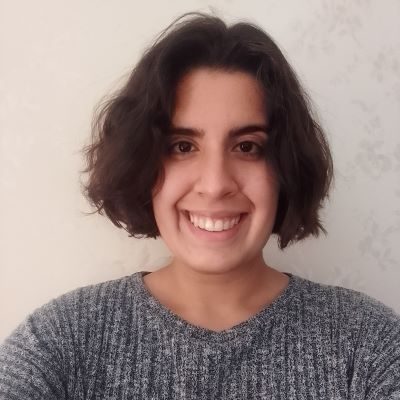
Lic. Agustina LaFuente (Becaria Doctoral CONICET). Oligomerización y actividad del GR
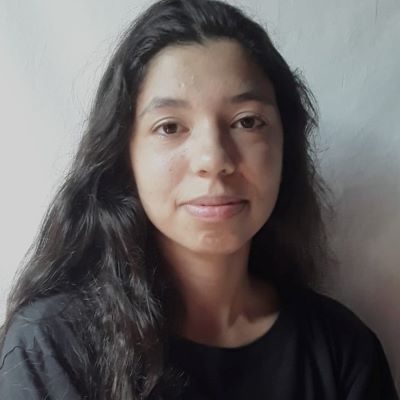
Lic. Belén Benitez Dos Santos (Becaria Doctoral CONICET). Bio-condensados del GR
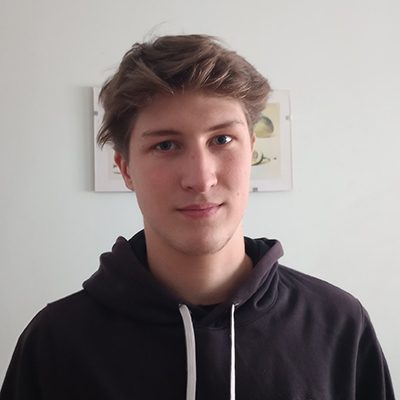
Lic. Alejo Vázquez Lareu (Becario Doctoral CONICET). Dinámica a nivel de molécular única del GR
Miembros Anteriores
1. Sebastián Yanichevsky (Tesis de licenciatura)
2. Stephanie Junge (Tesis de Licenciatura)
